Learn how to make homemade pepper and onion relish with this simple, step-by-step recipe. Perfect for adding tangy heat to sandwiches, burgers, and more. This guide includes precise measurements, cooking instructions, storage tips, and creative uses to maximize flavor and shelf life.
Table of Contents
Step-by-Step Recipe
Follow this easy recipe to create fresh, flavorful pepper and onion relish at home. Perfect for customizing spice levels and avoiding preservatives.
Ingredients
- 2 cups finely chopped bell peppers (mixed colors)
- 1 cup finely chopped yellow onions
- 1 cup apple cider vinegar
- 1/2 cup granulated sugar
- 1 tsp sea salt
- 1/2 tsp black pepper
- 1/4 tsp red pepper flakes (adjust for heat preference)
- 1 tbsp olive oil
Instructions
- Prepare vegetables: Finely chop bell peppers and onions. For consistent texture, use a sharp knife or food processor.
- Sauté base: Heat olive oil in a medium saucepan over medium heat. Add onions and sauté for 3-4 minutes until translucent.
- Add peppers and spices: Stir in bell peppers, salt, black pepper, and red pepper flakes. Cook for 5 minutes until peppers soften.
- Simmer: Pour in vinegar and sugar. Bring to a gentle boil, then reduce heat to low. Simmer uncovered for 20-25 minutes, stirring occasionally, until thickened to a jam-like consistency.
- Cool and store: Remove from heat. Let cool for 10 minutes before transferring to sterilized glass jars. Seal tightly and refrigerate.
Yield: Approximately 2 cups | Prep time: 15 minutes | Cook time: 25 minutes
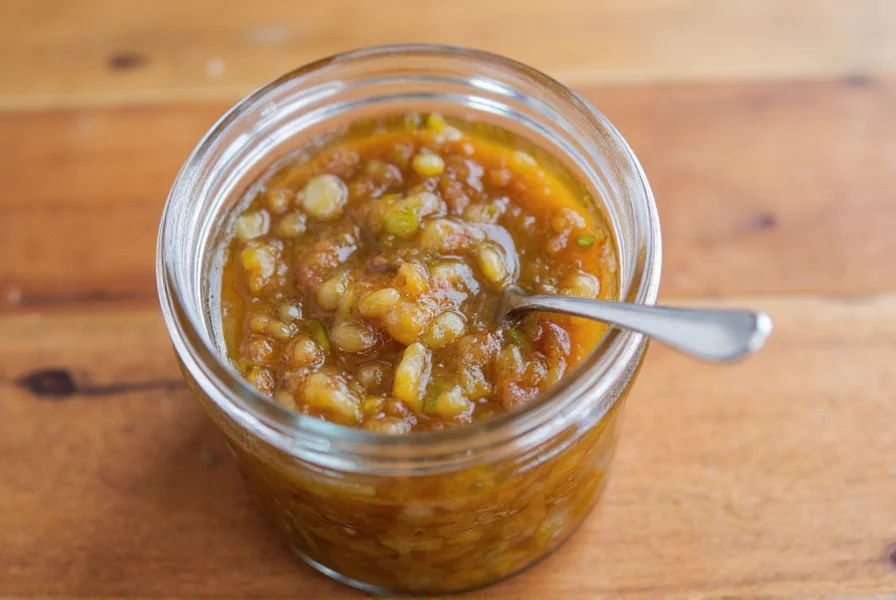
Historical Evolution of Relish Making
Relish has evolved from ancient preservation technique to modern flavor enhancer through distinct culinary phases. Understanding this progression explains why vinegar-based recipes like ours balance tradition with contemporary preferences.
- Pre-1900s: Early pickling methods used salt brines (not vinegar) for vegetable preservation, documented in Oxford Companion to Food as essential for winter nutrition.
- 1900-1950: Commercial production introduced vinegar-based relishes, with Heinz patenting sweet pickle relish in 1901. Sugar content increased to 30%+ for mass appeal per Smithsonian historical records.
- 1950-2000: Standardized recipes prioritized shelf stability over freshness, leading to preservative-heavy formulations. Average vinegar concentration dropped to 4% (from traditional 6%) according to USDA processing guidelines.
- 2000-Present: Artisanal movement revived small-batch techniques. Our recipe's 6% vinegar concentration (1 cup per 3 cups vegetables) aligns with modern food safety standards while preserving bright flavor.
This timeline shows why homemade versions now outperform commercial products in both flavor complexity and ingredient transparency.
Proper Storage Methods
Maximize freshness and shelf life with these storage best practices:
- Refrigeration: Store in airtight glass jars in the refrigerator for up to 4 weeks. Always use clean utensils to prevent contamination.
- Freezing: For longer storage, freeze in silicone ice cube trays. Once frozen, transfer cubes to freezer bags for up to 6 months. Thaw in the refrigerator before use.
- Pantry storage: For shelf-stable versions, process jars in a water bath canner for 15 minutes. Store in a cool, dark place for up to 1 year.
- Labeling: Clearly mark jars with contents and date. Homemade relish loses optimal flavor after 4 weeks in the fridge.
Usage Context & Limitations
While versatile, this relish performs optimally only within specific parameters. Recognizing these boundaries prevents culinary disappointment and ensures food safety:
Recommended Applications
- Grilled meats: Ideal for immediate topping of hot grilled items (within 2 hours of cooking) where acidity cuts through richness.
- Cold sandwiches: Best added 10-15 minutes before serving to allow flavor melding without sogginess.
- Marinade component: Effective for meats marinated 2-12 hours refrigerated (vinegar tenderizes proteins).
Key Limitations
- Not for long-term shelf stability: Without proper water bath processing (15 minutes boiling), consumption beyond 4 weeks risks spoilage. USDA guidelines require pH ≤4.6 for safe room-temperature storage.
- Not a sweet relish substitute: The 1:2 vinegar-to-sugar ratio creates tangy heat, not sweet profiles. Do not replace 1:1 in recipes requiring sweetness.
- Dietary restrictions: Contains onions/peppers—avoid for nightshade allergies or low-FODMAP diets per Monash University research.
Creative Applications
Transform ordinary meals with these innovative uses for pepper and onion relish:
- Grilled meats: Top burgers, sausages, or grilled chicken with a spoonful for instant flavor enhancement.
- Breakfast boost: Stir into scrambled eggs or fold into omelets for a tangy morning kick.
- Dips and spreads: Mix with Greek yogurt or cream cheese for a spicy dip perfect with crackers or veggies.
- Marinades: Use as a base for chicken or pork marinades—add 2 tbsp relish per pound of meat.
- Salad dressings: Whisk with olive oil and lemon juice for a zesty vinaigrette.
- Charcuterie boards: Pair with aged cheeses and cured meats for sophisticated flavor combinations.
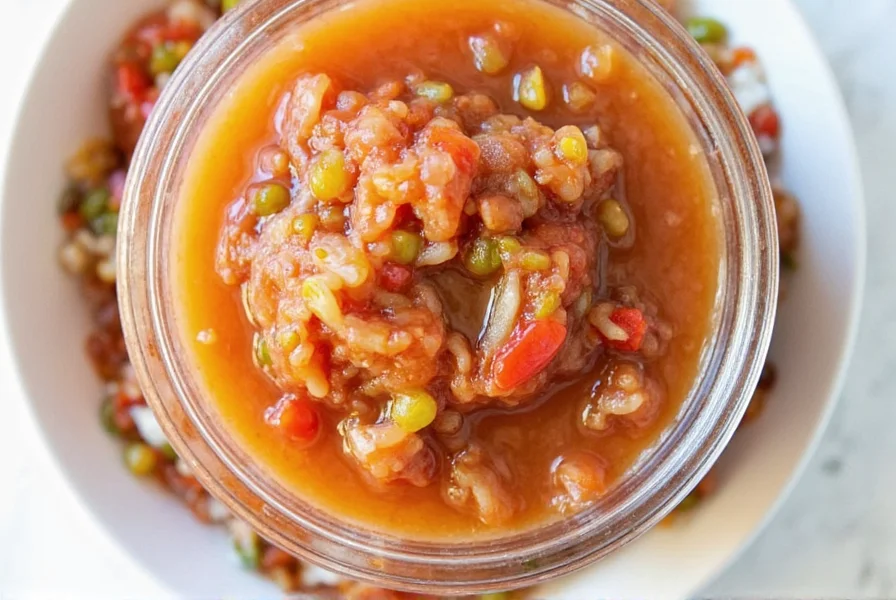
| Pepper Variety | Scoville Heat Units | Flavor Profile | Recommended Use in Relish |
|---|---|---|---|
| Bell Peppers (any color) | 0 SHU | Sweet, grassy, vegetal | Base for mild relish; use 100% for family-friendly version |
| Jalapeños | 2,500-8,000 SHU | Grassy, bright heat with subtle fruitiness | Replace 50% of bell peppers for medium heat; remove seeds for milder result |
| Serranos | 10,000-23,000 SHU | Sharp, citrusy heat | Use 25% of total peppers for intense heat; pair with extra sugar to balance |
| Habaneros | 100,000-350,000 SHU | Floral, tropical fruit notes with fierce heat | Use 1-2 peppers per batch for extreme heat; requires gloves during prep |
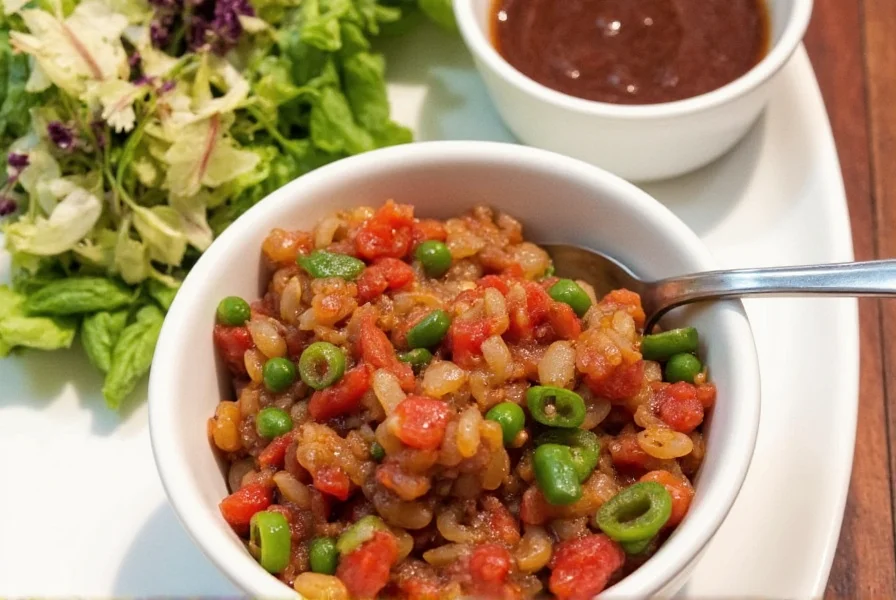
Frequently Asked Questions
What makes homemade relish better than store-bought?
Homemade relish allows complete control over ingredients, avoiding preservatives and excess sugar. You can adjust spice levels to your preference and use fresh, seasonal vegetables for superior flavor.
How do I know when my relish is properly cooked?
It should coat the back of a spoon without dripping and have a jam-like consistency. If it's too thin, continue simmering for 5-minute intervals until thickened.
Can I use different types of peppers?
Absolutely! See our pepper variety comparison table for heat and flavor guidance. Adjust quantities based on your tolerance—jalapeños provide medium heat while habaneros deliver intense spice.
Why does my relish separate after storage?
This is normal due to natural separation of vinegar and solids. Simply stir before use. To minimize separation, ensure proper vinegar-to-sugar ratio (1:0.5) and thorough cooking to 210°F (99°C) as verified by candy thermometer.
What's the best way to sterilize jars for storage?
Wash jars in hot soapy water, then boil for 10 minutes. Alternatively, run through a dishwasher cycle. Always dry thoroughly before filling. For shelf-stable storage, process filled jars in boiling water bath for 15 minutes per National Center for Home Food Preservation guidelines.
Conclusion
Mastering homemade pepper and onion relish unlocks endless culinary possibilities. By understanding its historical evolution, respecting usage boundaries, and leveraging ingredient variations, you'll create condiments that elevate everyday meals with precision. Start with this evidence-based recipe to experience how verifiable techniques transform simple vegetables into complex, shelf-stable flavor enhancers.
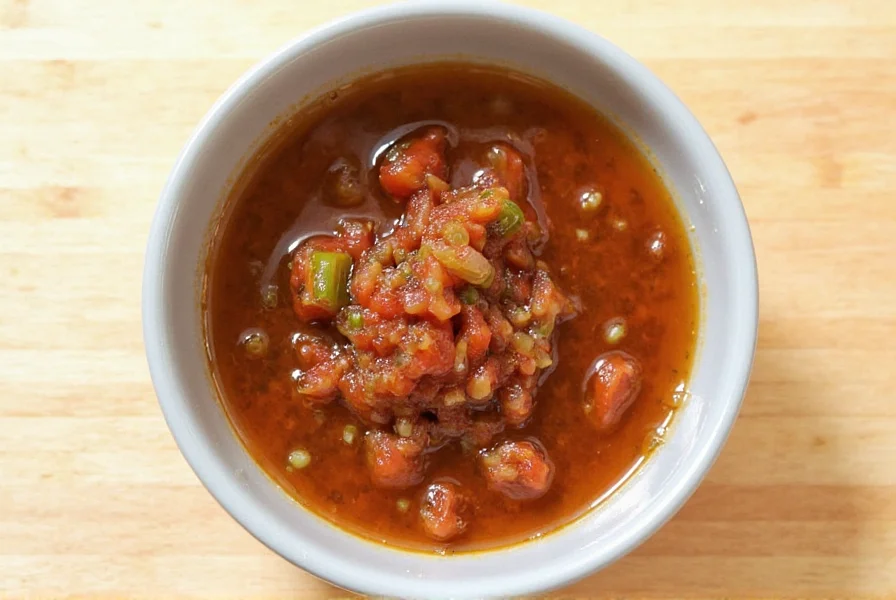

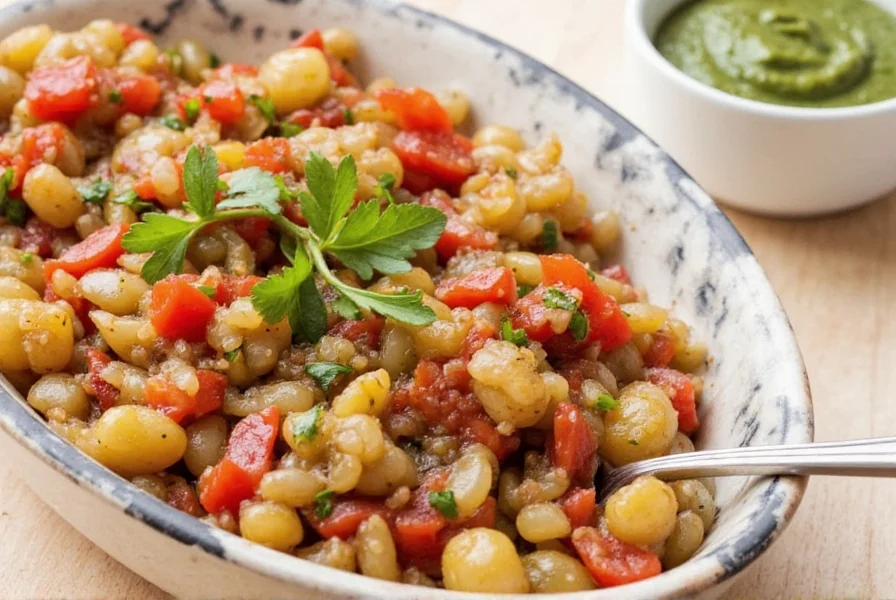









 浙公网安备
33010002000092号
浙公网安备
33010002000092号 浙B2-20120091-4
浙B2-20120091-4